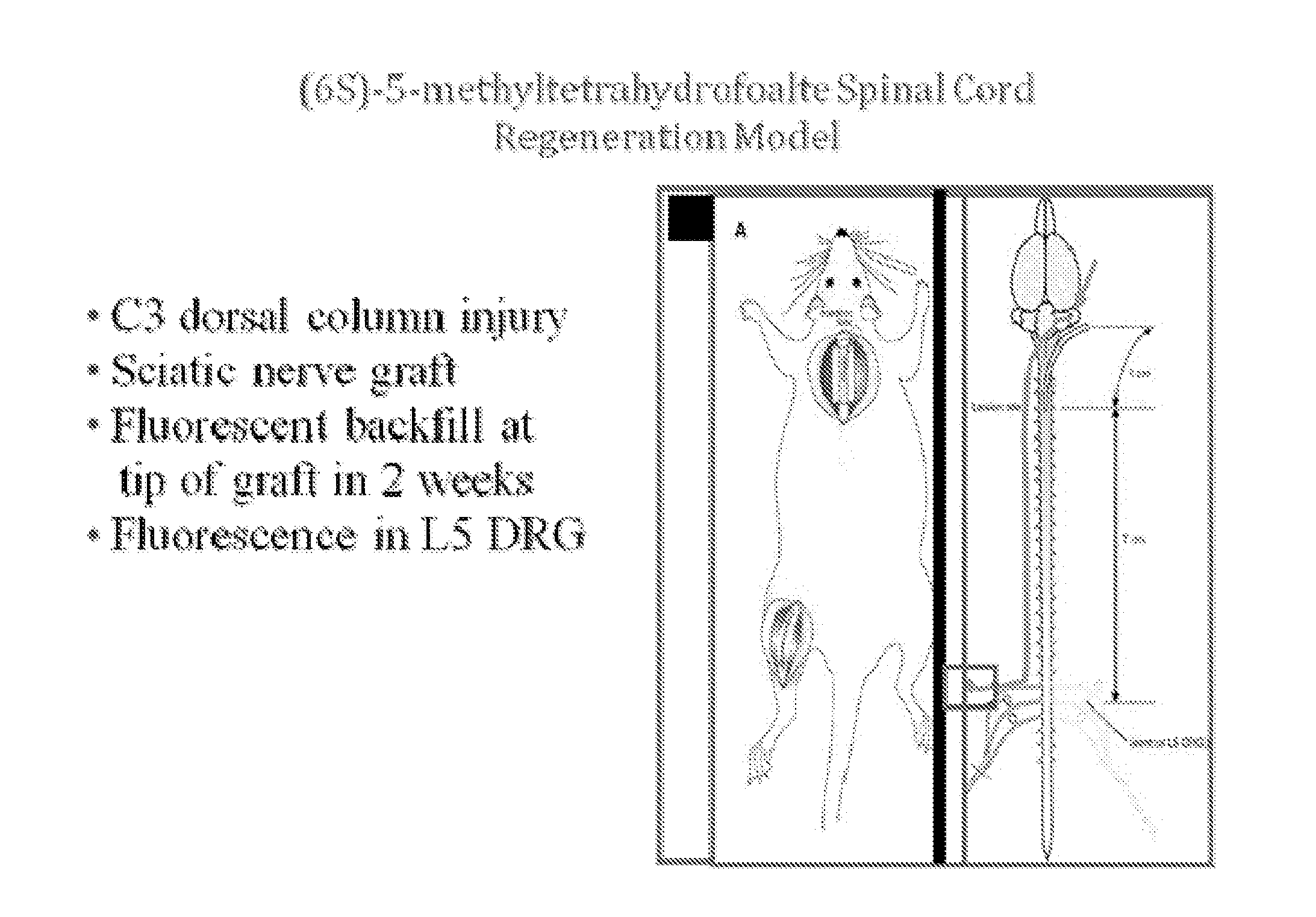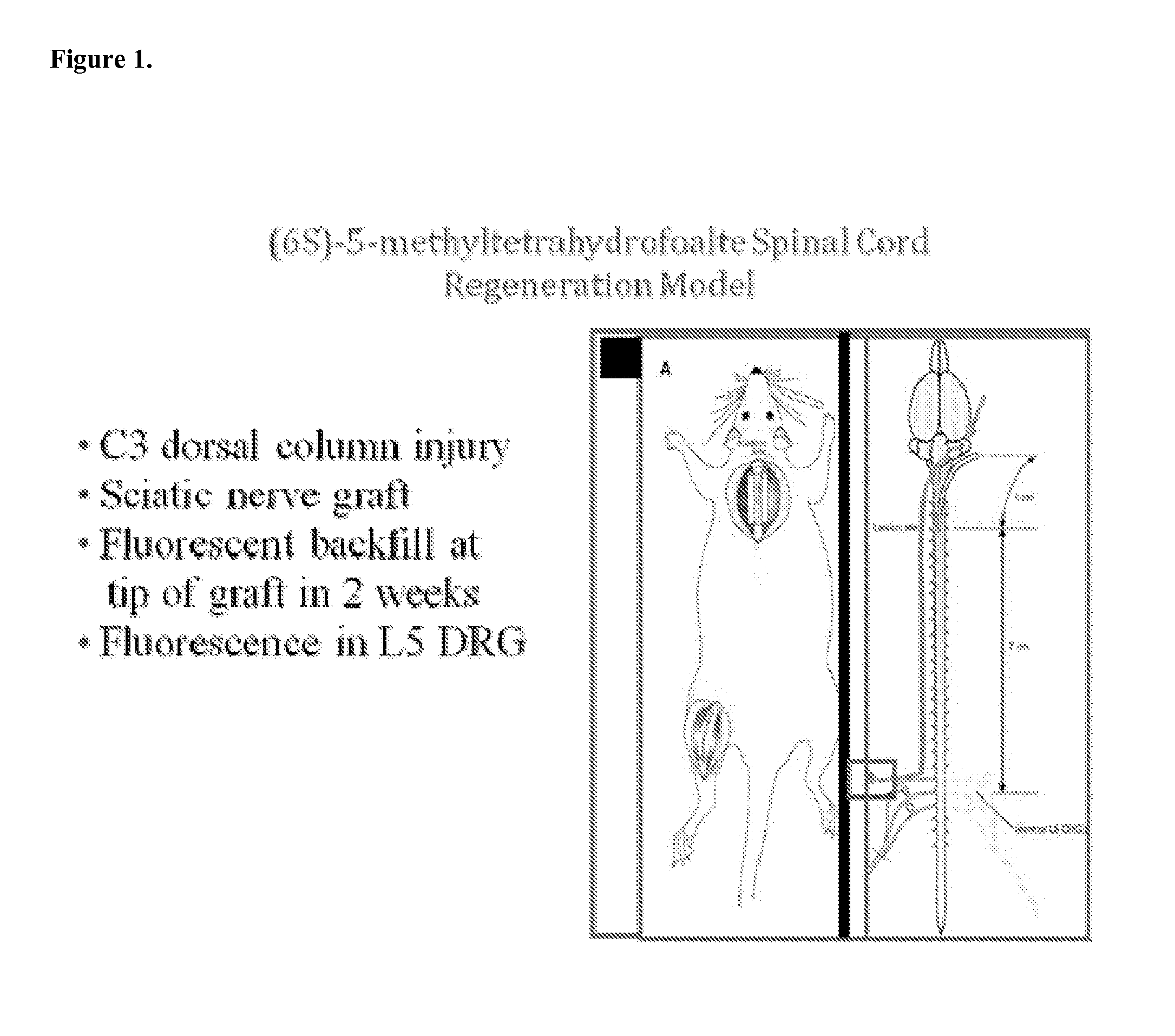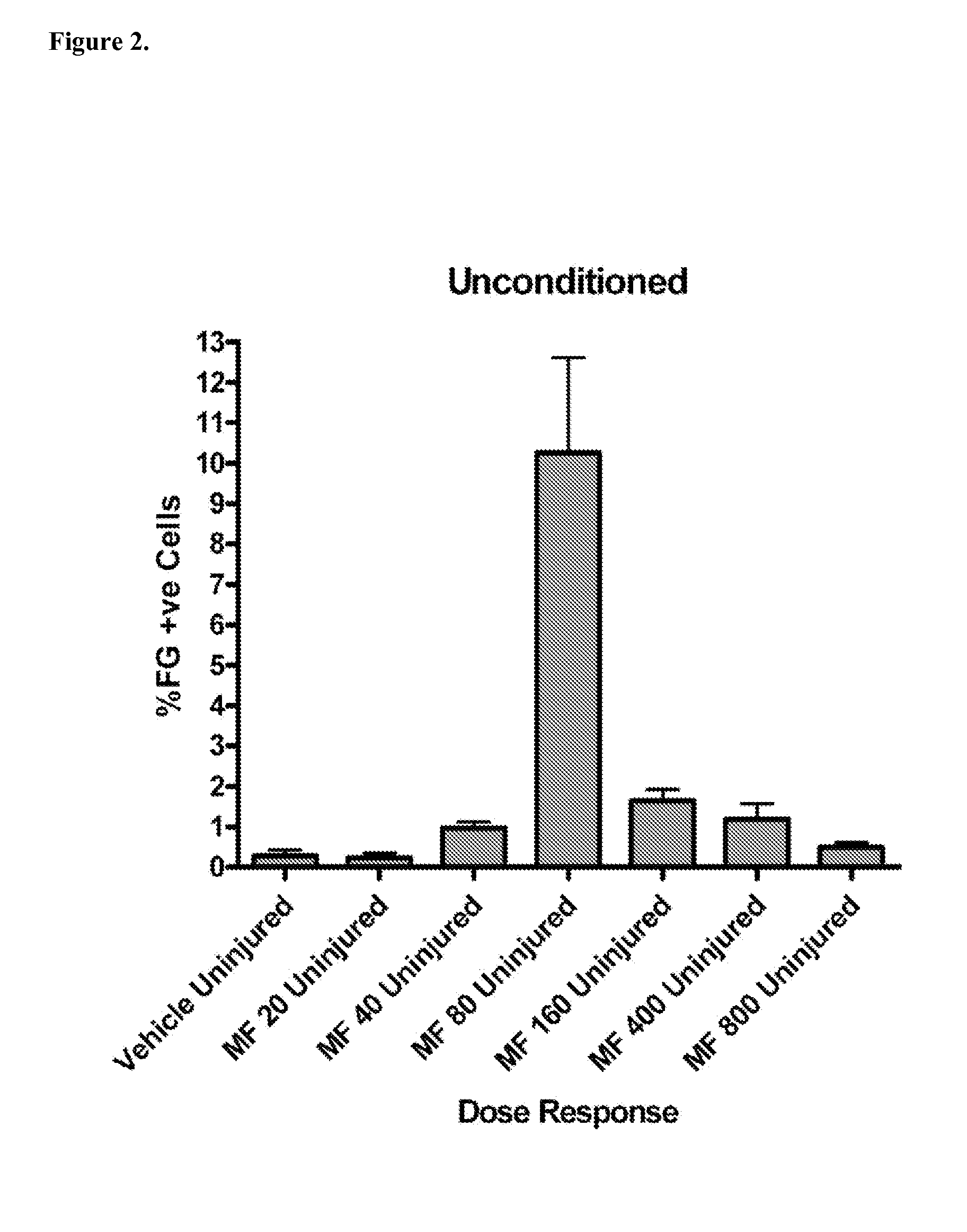(6S)-5-methyltetrahydrofolic acid for therapy of tissue injury
a technology of folic acid and folic acid, which is applied in the field of(6s)5methyltetrahydrofolic acid compounds, can solve the problems of social isolation and emotional depression, detrimental effects on the psychological well-being of patients, and many of these interventions carry significant risks
- Summary
- Abstract
- Description
- Claims
- Application Information
AI Technical Summary
Benefits of technology
Problems solved by technology
Method used
Image
Examples
experimental example 1
Spinal Cord Regeneration
Materials and Methods
[0088]Sixty four adult male Sprague-Dawley rats (200-300 gm) were subjected to surgery under ketamine / xylazine anesthesia, as previously described (FIG. 1.) The cervical cord was exposed through a C3 laminectomy and dural opening. Using a pair of sharp jeweler's forceps, a well-defined 1 mm-deep injury was made in both posterior columns. A sciatic nerve segment harvested from the left hindlimb then was implanted at the injury site using 10-0 nylon sutures in the pia. The other end of the graft was left to lie freely under the skin.
[0089]Two weeks later, 5 μl of the retrograde tracer Fluorogold was placed into the nerve graft at a distance of 1 cm from the spinal cord. The fluorescent tracer does not diffuse down the graft and into the spinal cord. Rather, it is picked up solely by axons that have grown into the graft and is transported retrogradely in these axons.
Perfusion and Tissue Preparation
[0090]Twenty four hours later, the an...
experimental example 2
In Vitro Assays
Materials and Methods
[0098]Three groups of adult male Sprague-Dawley rats (200-300 gm) are used for the in vitro assays: Group I, or uninjured animals (n=8); Group II, or animals with preceding spinal cord injury (n=8), in which a dorsal column injury is made as described above, but without placement of a sciatic nerve graft; and Group III, or animals with preceding sciatic nerve crush injury (n=16). Half of the animals in each group receive intraperitoneal injections of 80 μg / kg of (6S)-5-methyltetrahydrofolic acid daily for 3 days before injury. The control animals are euthanized 3 days after treatment with (6S)-5-methyltetrahydrofolic acid was started. Groups II and III animals are euthanized 48 hours after the injury (or 5 days after starting the (6S)-5-methyltetrahydrofolic acid injections).
Dorsal Root Ganglia Culture
[0099]Immediately after euthanasia, the L4 and L5 ganglia are removed from the adult rats, dissociated, and centrifuged through a cushion of 10% Fic...
experimental example 3
Functional Recovery Model
Materials and Methods
[0101]Adult male Sprague Dawley rats (200-300 gm) are anesthetized with halothane and undergo a T9 laminectomy under aseptic conditions. A 12.5 gm / cm injury is created using the NYU impactor._Rats received (6S)-5-methyltetrahydrofolic acid (80 μg / kg) in saline, or an equal volume of saline alone via an intraperitoneal injection every day for 2 weeks, beginning 3 days before the injury. The animals are videotaped for 4 minutes while ambulating in an open-field environment on the day after surgery, and weekly thereafter for a period of 6 weeks. Ambulatory function is scored in a blinded fashion using the BBB rating scale that assigns points for the frequency of occurrence of specific features of normal posture and locomotion. The scoring differences between (6S)-5-methyltetrahydrofolic acid and control groups are displayed in a graph illustrating the mean±standard error of the mean (SEM) at each time point. In addition, the primary end poi...
PUM
| Property | Measurement | Unit |
|---|---|---|
| particle size | aaaaa | aaaaa |
| distance | aaaaa | aaaaa |
| distance | aaaaa | aaaaa |
Abstract
Description
Claims
Application Information
 Login to View More
Login to View More - R&D
- Intellectual Property
- Life Sciences
- Materials
- Tech Scout
- Unparalleled Data Quality
- Higher Quality Content
- 60% Fewer Hallucinations
Browse by: Latest US Patents, China's latest patents, Technical Efficacy Thesaurus, Application Domain, Technology Topic, Popular Technical Reports.
© 2025 PatSnap. All rights reserved.Legal|Privacy policy|Modern Slavery Act Transparency Statement|Sitemap|About US| Contact US: help@patsnap.com



